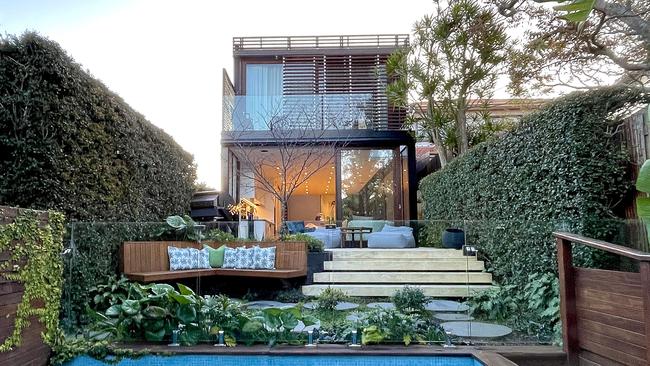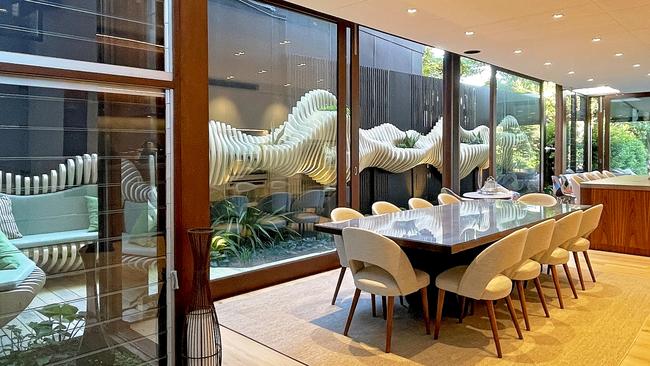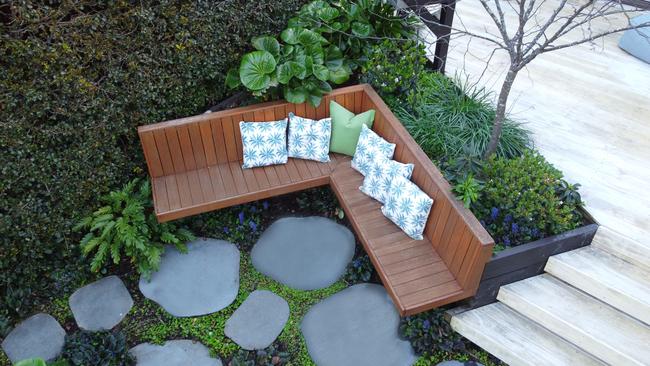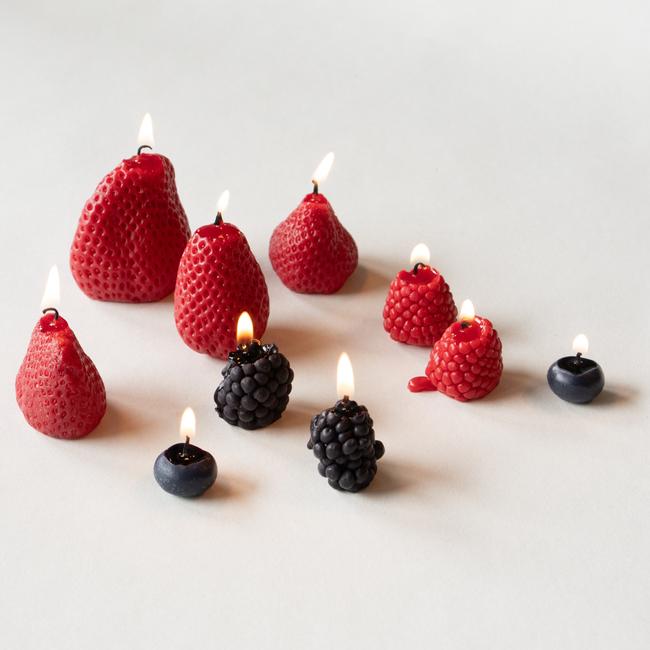Unconventional symphony turned this space into a sanctuary
It was music that inspired Steve Warner when he envisioned this outstanding Vaucluse backyard, featuring sculpture and creative planting.

At their first meeting, the owners of this property in Sydney’s Eastern Suburbs made it clear they wanted a wow factor for their garden project, says Steve Warner, principal of landscape design firm OUTHOUSE Design. “They were looking for an artistic vision and to make a statement from the moment you entered the house.”
The modern design of the home in Vaucluse, to which the clients had downsized, created a long, narrow side area that is highly visible from the open plan dining and kitchen area through a wall of sliding glass doors.
The aim was to make this an extension of the internal living space, blurring the line between indoors and out.
Warner’s creative solution was a 16m-long, three-dimensional sculptural ribbon whose shape was inspired by the evocative music chosen for the recent wedding of the clients’ daughter. “By creating a sound wave using the music, we could create a piece of sculpture that has meaning and function,” says Warner.
He used a sound wave section that was calmer and “flatter” to enclose an intimate corner seating area, which anchors the whole sculpture at its start. “As it modulates down the side area towards the activities of the back garden, it gets more energetic, with more movement.”
To make the sculpture, Warner and his team used a computer-controlled cutting machine to create 270 individual slices from laminated accoya boards. Accoya is a sustainable, dimensionally stable and durable external timber that can be left raw, needing no maintenance. Each piece is secured to dark backing boards, divided into manageable sections given the site’s tight access via a side gate only.

Along its length, the sculpture includes concealed planters containing Sansevieria ‘Moonlight’ and trailing native violet (Viola hederacea).
The planting underneath features renga lily (Arthropodium cirratum), Philodendron ‘Xanadu’, and Ajuga ‘Catlin’s Giant’ to bring softening and texture into the narrow space, while lighting adds drama at night. A smaller version of the sculpture is installed in the other side passage, visible from the kitchen.
New accoya decking along the side passage and around to the rear of the house in a broader sweep further connects inside and out, and creates additional circulation zones for larger groups. In the back garden, a large planter box set on an angle visually stretches the garden and defines another seating zone.

The planter supports a small deciduous tree, Cercis ‘Forest Pansy’, which is a focal point from the house and provides summer shade, as well as flowering shrubs such as Rhaphiolepis ‘Oriental Pearl’ and Daphne ‘Pink Fragrance’, and the strongly textural tractor seat plant (Ligularia reniformis).
Floating timber steps lead to a casual space with oversized bluestone steppers in rounded, organic shapes infilled with native violet groundcover, replacing what was a bland expanse of artificial turf.
The existing pool was rejuvenated with a new pool fence and decking, while the boundary hedges were kept for privacy.
The garden won a gold award at the Landscape Design Institute 2023 National Awards. “We absolutely love what Steve and his team created for us,” says the client.
“Judging from the amazing comments from our visitors, I’m not surprised they won gold.”
Q&A
Every summer, my normally healthy Stephanotis gets a white, fluffy scale on the stems and leaves, which blackens the stems and kills the vines. White oil hasn’t helped.
Penny Griffith, Sydney
It’s likely to be mealybug, not scale. They’re difficult to control because they hide in plant crevices and also live on roots. Adults and egg sacs are not susceptible to pesticides but the crawler stages are. For small numbers, dab with a cotton bud dipped in methylated spirits. For larger infestations, spray with Eco-Neem at regular intervals; you can also use this as a soil drench.
My nine-year-old mango tree flowers profusely in September and October, but the flowers soon dry and brown and only a few fruits form. What’s going on?
Lawton Ratnam, Perth
Mangoes are tropical trees that prefer dry winters and humid, wet summers, but they do grow in Perth’s opposite climate. Windy conditions and low temperatures affect fruit set. Choose early and mid-season varieties (such as Kensington Pride and R2E2) that flower in early spring and ripen in late summer. Trees need soil enriched with organic matter, regular water from spring to autumn, and a soft mulch.
As we sail around Australia, I try to keep my pots of herbs and leafy greens away from salt water and give them sun. Why do the leaves have a fine white film that almost looks like a mould?
Megan Thomas, SV Inismara
A fine film of salt would burn soft leaves, so it’s more likely to be powdery mildew. This fungus flourishes in warm, humid conditions, especially in summer and autumn. Water plants or wash salt off them in the mornings so leaves aren’t wet at night. Seasol increases plants’ resistance. Remove the worst leaves and use a milk spray (1 part full cream milk to 10 parts water) weekly.
Send your questions to helenyoungtwig@gmail.com. The best question for May wins $120 worth of lifelike fruit and vegetable candles, hand-made in Australia, from Nonnas Grocer. See the remarkable range at nonnasgrocer.com



To join the conversation, please log in. Don't have an account? Register
Join the conversation, you are commenting as Logout